Art Bucket List: Great Artworks Worth Traveling For
I travel to experience other cultures and see amazing things. Among my favorite things to do when I travel is tour art museums.
Quite simply, art is one of the reasons I travel. Some people have a country or city bucket list. I have an art bucket list, and I’ve already seen most of it.
Art has the power to provoke strong emotional reactions, and its creation is closely tied to important turning points in history.
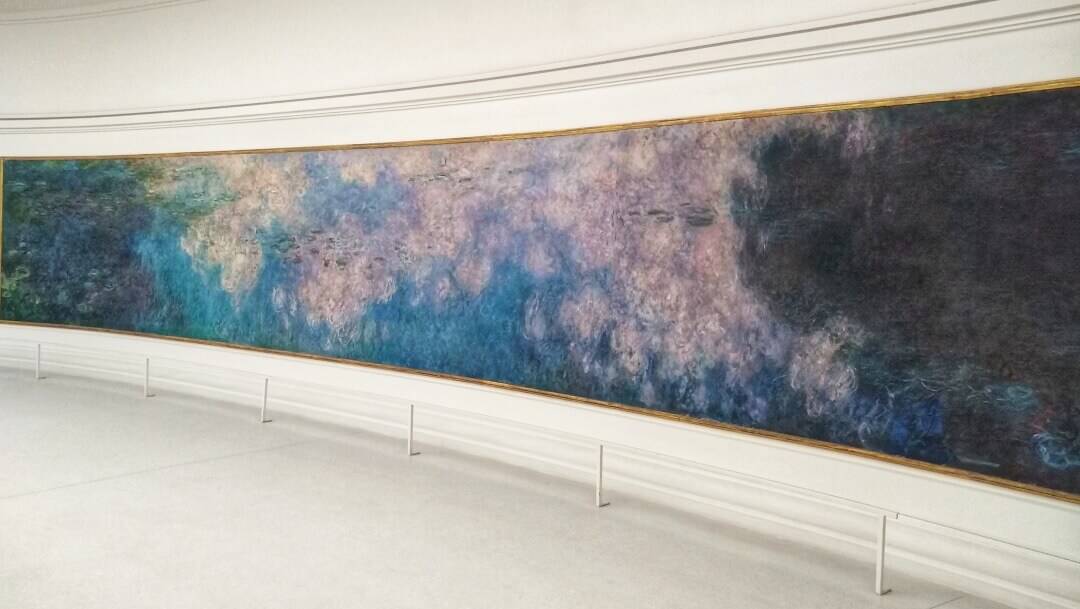
This post includes affiliate links. If you make a purchase through one of these links, I may earn a small commission at no additional cost to you. As an Amazon Associate, I earn from qualifying purchases. See disclaimer.
Take, for example, Ghiberti’s stunning “Gates of Paradise” doors for the San Giovanni Baptistery in Florence.
The competition for the commission to create the doors is often credited with kicking off the Rennaissance.
Pablo Picasso’s Les Demoiselles d’Avignon sparked strong reactions (including anger) from those who saw it first, including Henri Matisse.
Though (as an introverted person who struggles with travel anxiety) I don’t enjoy crowds at all, I do enjoy seeing that so many of the top tourist sites in some of the great cities of the world are also museums.
There are several key cities and museums that house some of the top pieces of bucket list art, among them are New York City, Paris, Rome, and Florence, Italy.
All of the works listed below are pieces that I have seen myself.
Some I consider to be art worth traveling especially to see; all of it is worth making an effort to see if you’re already in the area.
Here is my art bucket list, presented to you geographically.
Bucket list art in Paris, France
Louvre Museum
Mona Lisa, Leonardo da Vinci (c. 1503)
I had to start with the mother of all artistic tourist draws in the world.
Leonardo da Vinci’s Mona Lisa (also called La Gioconda) is considered to be one of the most visited, most written about, and most highly insured artworks on the planet (the equivalent of more than half a billion 2019 dollars), and it’s without a doubt, a must-do on any Paris itinerary.
Don’t expect to get a lot of time to spend with this painting.
Even with less than 15 people in the room on the day we were there, hubby and I were urged by museum staff to move along quickly. This is the best photo I could get.
TIP: Keep track of all of your important travel details with a digital travel planner like this.
Prefer paper planners? Grab your printable travel itinerary planner pages here.
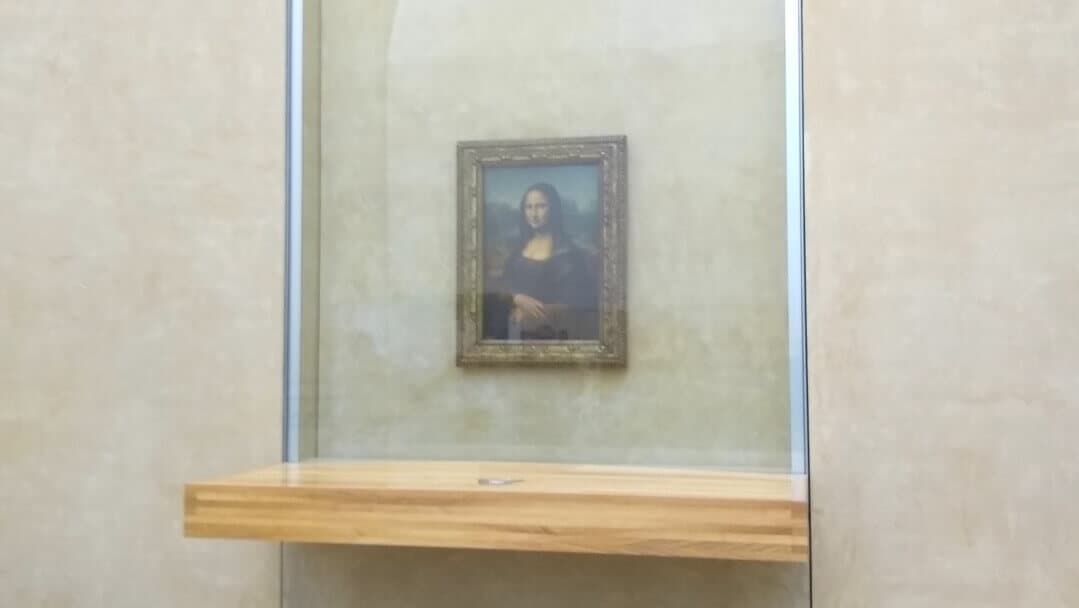
To see her with as few other people as possible, plan to arrive at the Louvre (Rue de Rivoli) 30 minutes before opening and then make a beeline to her after you get through security.
Please, I’m begging you, don’t be one of those travelers who leaves her presence and only remarks upon how much smaller she is than you expected.
I’m warning you now, the Mona Lisa is a (likely) privately commissioned portrait of a private citizen, so no, it’s not huge.
She measures at about 30 x 21 inches and you won’t get within 10 feet of her.
Related post: Free Things to Do on Your Trip to Paris
Venus de Milo, Alexandros of Antioch (c. 101 BC)
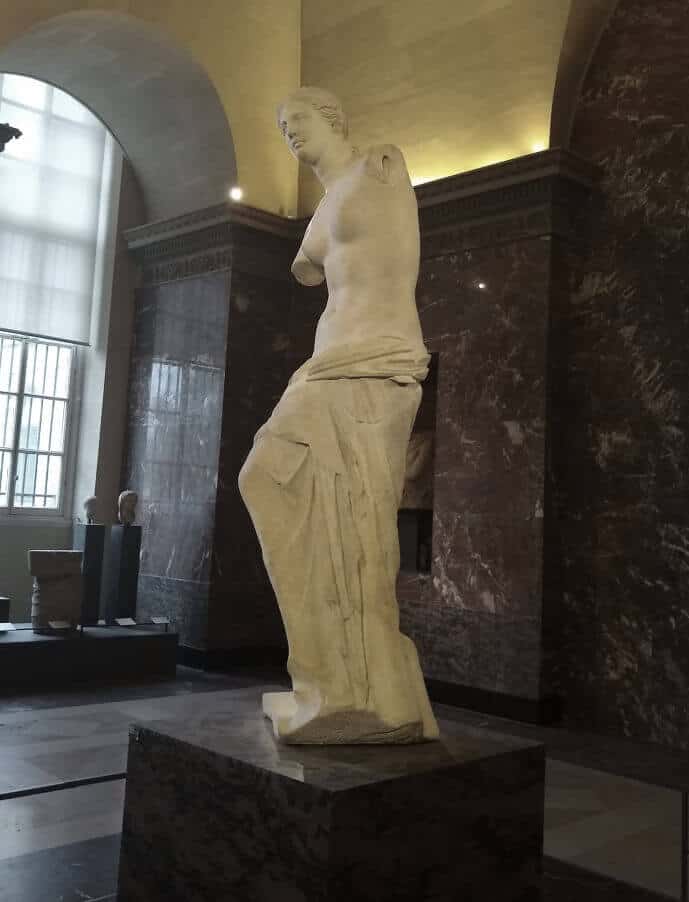
You’ve likely seen her in art and history textbooks in school since she’s doubtless the most famous ancient Greek sculpture in the world (with or without arms).
She’s on permanent display at the Louvre, so as long as you’re there to check out the Mona Lisa, make sure you spend a few minutes admiring the second most famous lady there.
Other notable works of art at the Louvre include the ancient Winged Victory sculpture,
Michelangelo’s Slaves (their unfinished counterparts live at the Galleria dell’Accademia in Florence, Italy, and are often referred to as The Prisoners), and Delacroix’s Liberty Leading the People.
The Louvre is an enormous museum.
To keep from being overwhelmed, do not attempt to see everything on one trip. That would be impossible.
Musee d’Orsay
Bal du moulin de la Galette, Pierre-Auguste Renoir (1876)
This is quite simply my favorite Renoir and one of my favorite Impressionist masterworks period.
It memorializes 18th-century working-class Parisians as they would spend time dancing and socializing in Montmartre at Moulin de la Galette on Sundays.
Also, it’s just downright beautiful. Look at how Renoir captured the light!
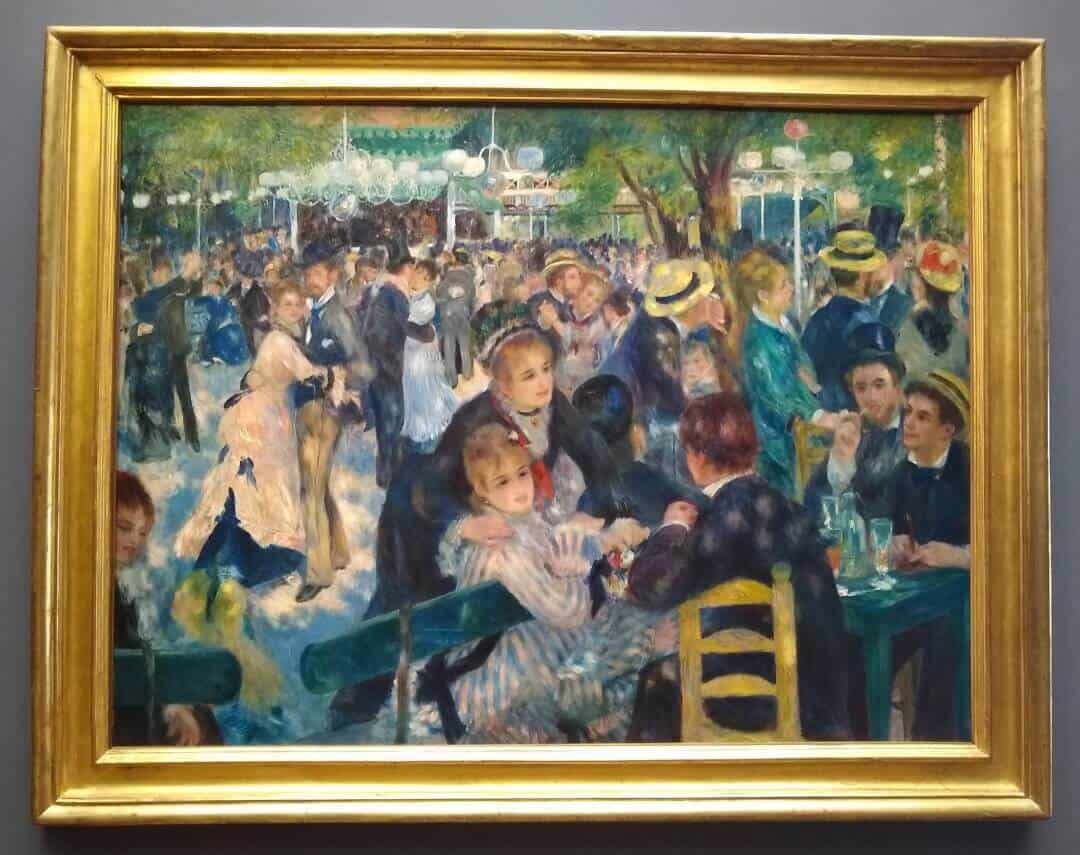
In my opinion, this piece alone is worth the price of admission to Musee d’Orsay, but fortunately, there are also easily a dozen other important works in this museum you will want to see while you are there.
Among them are Manet’s Olympia and The Picnic, Edgar Degas’ In a Café and The Ballet Class, Monet’s Blue Water Lilies, a Van Gogh self-portrait and his Starry Night Over the Rhône (not to be confused with The Starry Night at the Museum of Modern Art in New York City), and Suerat’s The Circus.
Outside the Museum of Modern Art in New York City, I don’t think I’ve been to another museum more cram-packed with masterpieces.
This is another museum I’d recommend using an audio guide for or even a guided tour.
Book a 2-hour guided tour of Musée d’Orsay here!
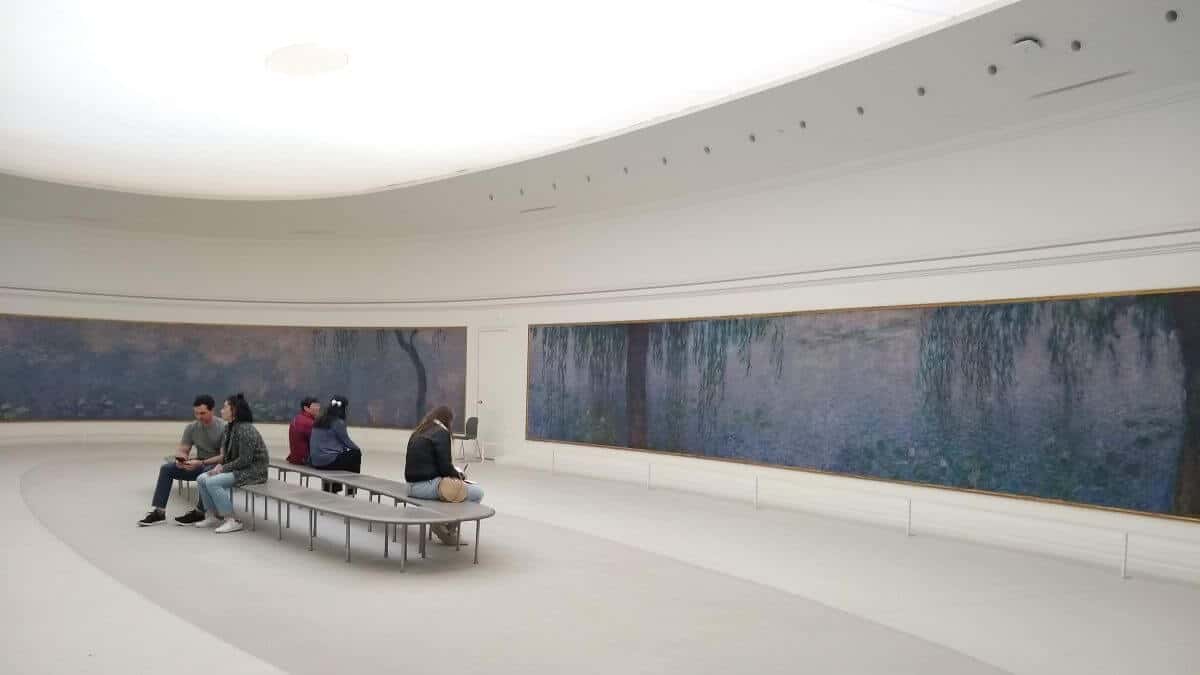
Musée de l’Orangerie
Water Lilies, Claude Monet (c. 1915-1926)
For the ultimate in Monet, you’ll need to pay a visit to the Musée de l’Orangerie in the Tuileries Garden in Paris.
There, in two large oval rooms on the ground floor, are installed eight unvarnished oil paintings on 22 panels.
Seating is in the center of the room so that you can allow yourself to be completely surrounded by these masterworks as they’re bathed in natural light.
Plan to arrive at l’Orangerie as it is opening or just before so that you can take in both rooms with a minimum of other people there. It’s a great way to take a break and relax in Paris.
The museum was created for the Water Lilies (in French, Nymphéas) which were installed there in 1927, but the rest of the collection is also worth your time as long as you are there.
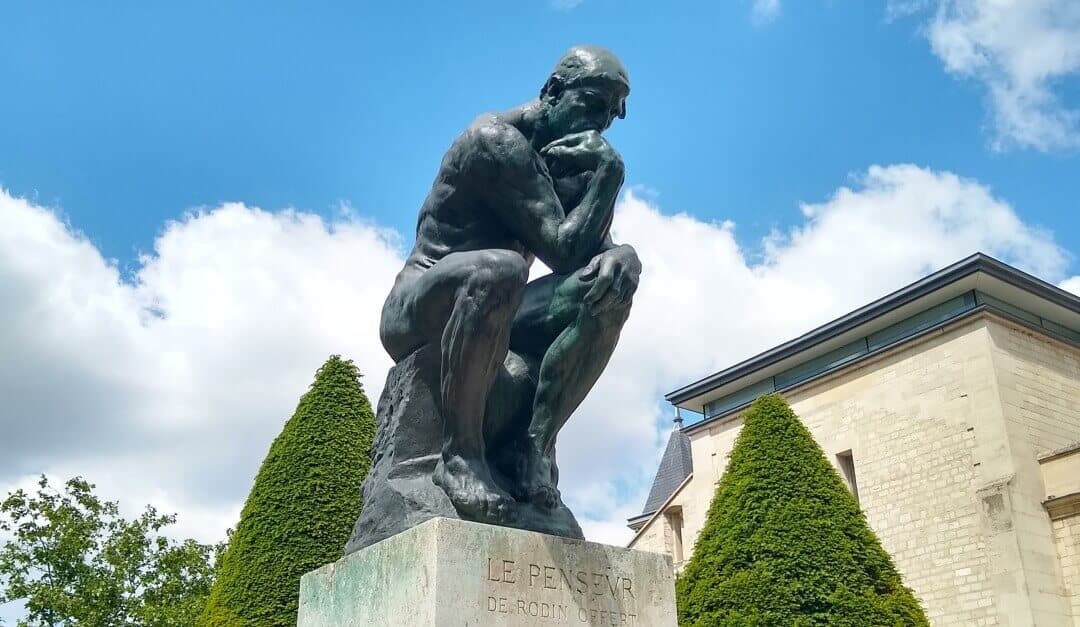
Musée Rodin
The Thinker, Auguste Rodin (1906)
Easily one of the most celebrated and recognizable sculptures ever created, Auguste Rodin’s The Thinker sits in the gardens outside the Musée Rodin building in Paris.
There are more than two dozen full-size castings of The Thinker as well as others of various sizes, including one on The Gates of Hell (also at Musée Rodin), one at the artist’s tomb at Musée Rodin Meudon (France), and a small version at the Metropolitan Museum of Art in New York City.
The version that sits in the gardens of Musée Rodin was the first full-scale bronze cast of the sculpture
Other notable artworks at Musée Rodin include The Walking Man, The Gates of Hell, and an original cast of The Burghers of Calais.
Bucket list art in Italy
Vatican Museums
The School of Athens, Raphael (1509-1511)
Considered by some to be Raphael’s masterpiece, The School of Athens can be found in the Raphael Rooms in the Vatican Museums, and must-see for any trip to Rome.
The fresco represents philosophy and depicts many key figures including Aristotle, Plato, Socrates, and more.
Raphael painted himself into this fresco as the Greek painter Apelles of Kos.
You can also see Michelangelo represented (probably) in the center of the painting as Heraclitus of Ephesus.
Other notable artworks at the Vatican Museums include the ancient Greek Laocoön sculpture (there’s an Italian Renaissance copy of this at the Uffizi in Florence) and Raphael’s Annunciation.
If you’re looking for even more Raphael paintings, there is also an outstanding collection at the Pitti Palace in Florence, Italy.
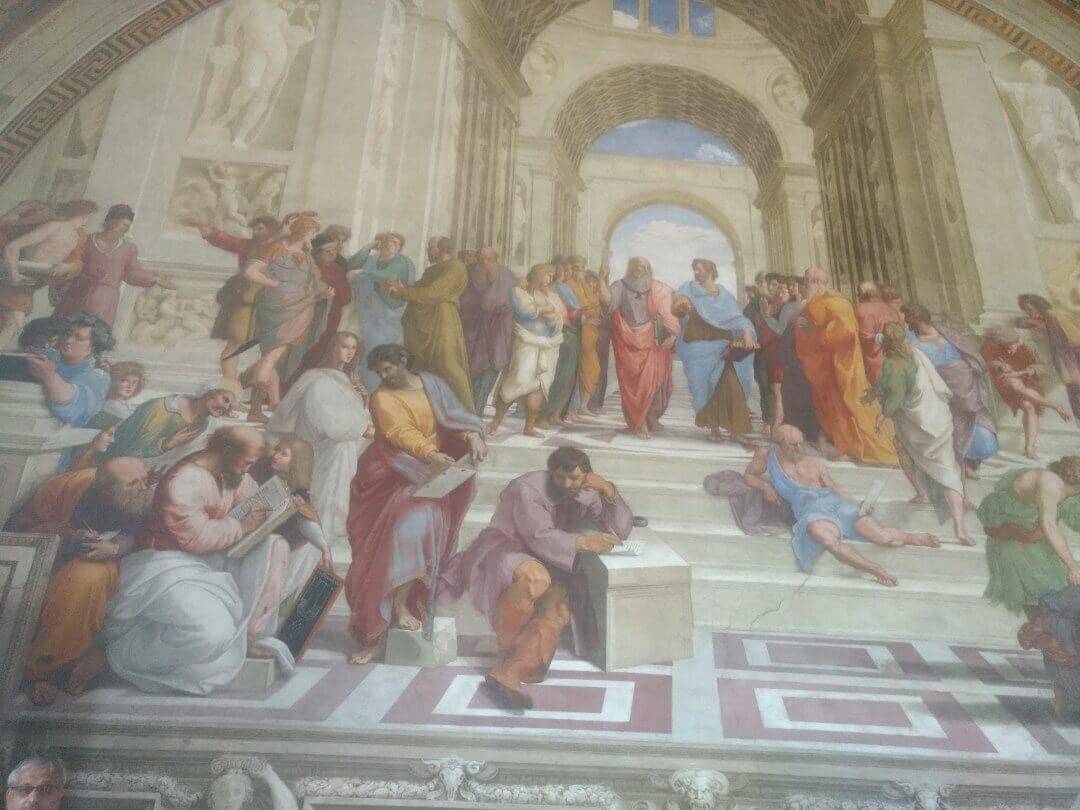
Sistine Chapel Ceiling, Michelangelo (1508-1512)
If there is a single room in the world more storied and revered among art and history lovers than the Sistine Chapel I certainly can’t think of it.
Michelangelo’s frescoes that cover the chapel were commissioned by Pope Julius II and depict nine scenes from Genesis.
The Creation of Adam is one of the most famous and reproduced images ever created.
Fun note: for at least part of the time that Michelangelo was painting the Sistine Chapel frescoes, Raphael was elsewhere at the Vatican painting The School at Athens (see above)…also for Julius II.
Expect the chapel to be packed with tourists.
If you want the chance to see it with far fewer people around, you will need to book a special early-morning guided tour.
Book an early access tour of the Vatican Museums and Sistine Chapel!
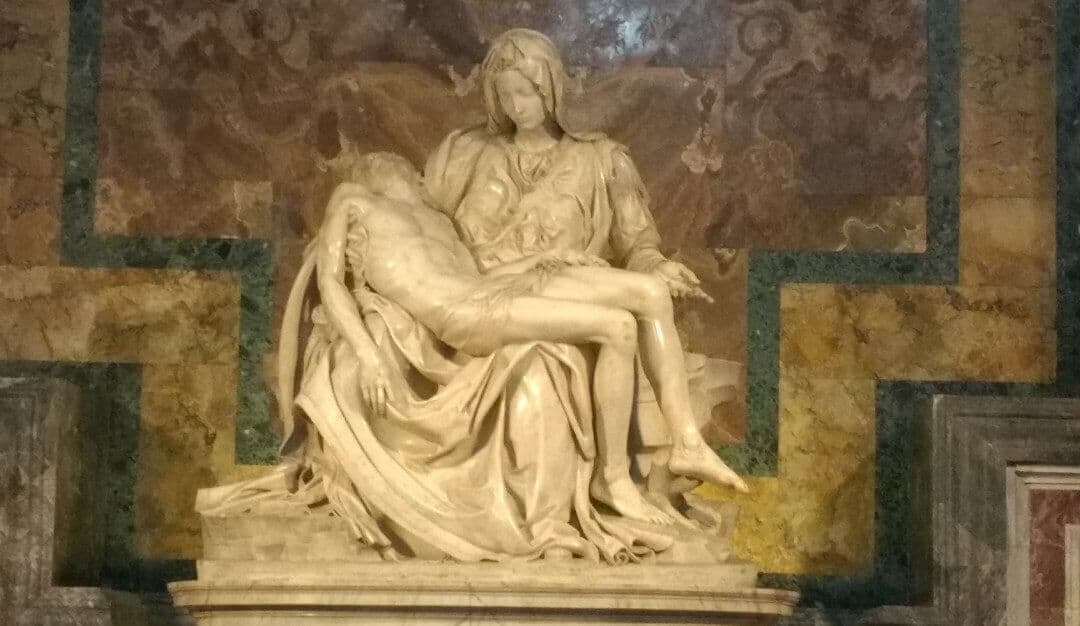
St. Peter’s Basilica
Pieta, Michelangelo (1499)
Michelangelo’s heartbreaking sculpture masterpiece of Mary with the body of the crucified Jesus is hubby’s favorite thing in Rome/Vatican City.
Like the Mona Lisa, you won’t be able to get close to the Pieta.
Unfortunately, she sustained significant damage in 1972 when a disturbed individual claiming to be the risen Christ attacked the sculpture with a geologist’s hammer.
He managed to get off about 15 blows that took off Mary’s nose and left arm at the elbow.
Fortunately, she was restored, but the Pieta is now protected by a very thick wall of bullet-proof acrylic glass.
Entrance to St. Peter’s Basilica is free, but expect a long line at security.
Consider doing a Vatican Museums, Sistine Chapel, and St. Peter’s combo tour.
If you’re interested in seeing another Michelangelo Pieta (from the end of his life), make sure you visit the Opera del Duomo Museum in Florence.
Florence, Italy
Galleria dell’Accademia
Michelangelo’s David (1504)
When you think about Renaissance sculpture (as you no doubt do often) the reigning king has to be Michelangelo’s David. (See what I did there?) It’s not to be missed on any trip to Florence whether you’re there for a week or even just a day.
Related Post: Don’t Miss These Florence Hidden Gems
The much-larger-than-life size marble sculpture was originally intended to adorn Florence’s Duomo, but then someone said “Hey this is really heavy” and they realized they’d never be able to hoist it to the rooftop.
So, they put it outside city hall (now known as the Palazzo Vecchio) instead.
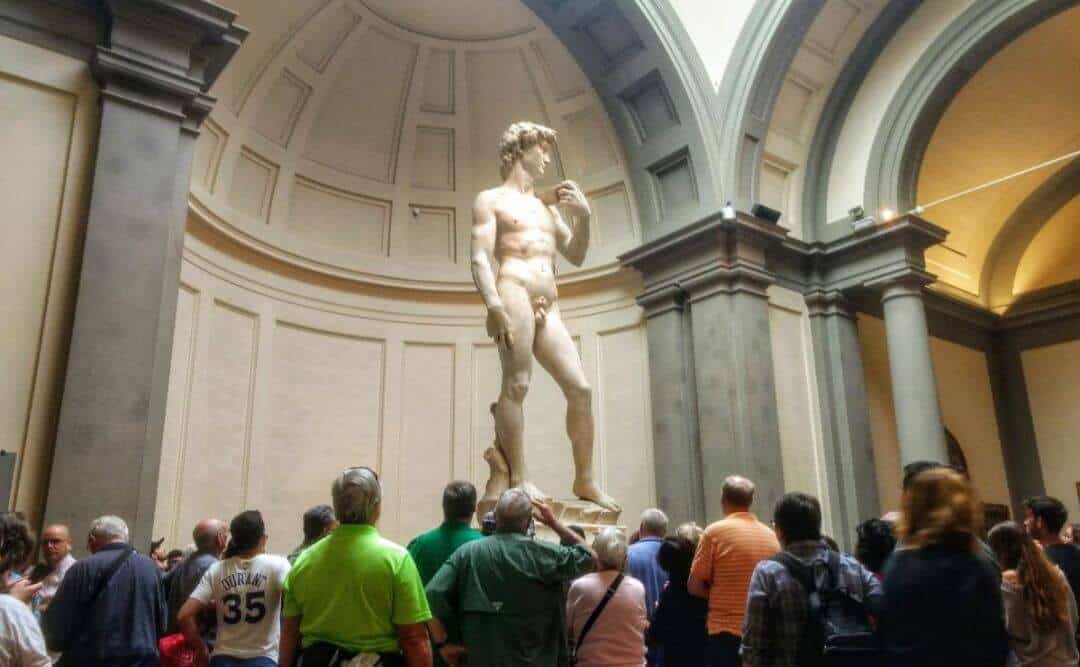
David is yet another Michelangelo sculpture that has to be protected by bulletproof plexiglass after a really dumb person took a hammer to David’s feet in 1991.
But Hammer Guy was outdone by the Florentine who broke off David’s arm when he threw a bench out the window of the Palazzo Vecchio during a political riot.
This story may be apocryphal, but either way, the powers that be in Florence finally one day said “This is why we can’t have nice things” and moved David to the Galleria dell’Accademia in 1873.
Don’t forget to buy your tickets in advance. Entrance to this museum does sell out.
Book your guided tour in advance here!
Also not to be missed at the Academia Gallery are Michelangelo’s unfinished Prisoners sculptures that line the gallery leading to David. Their finished counterparts (called the Slaves) live at the Louvre Museum in Paris.
Uffizi Gallery
The Birth of Venus, Sandro Botticelli (1486)
Botticelli’s masterpiece of Italian Renaissance painting ranks near the top of my list of paintings that you really need to see in person to fully appreciate.
Yes, reproduced in photos you can see that it’s beautiful, but it’s downright stunning in person.
The detail is just *sigh*. It’s really hard to describe. Otherworldly? But you need to see this painting. In person. Now I’m repeating myself.
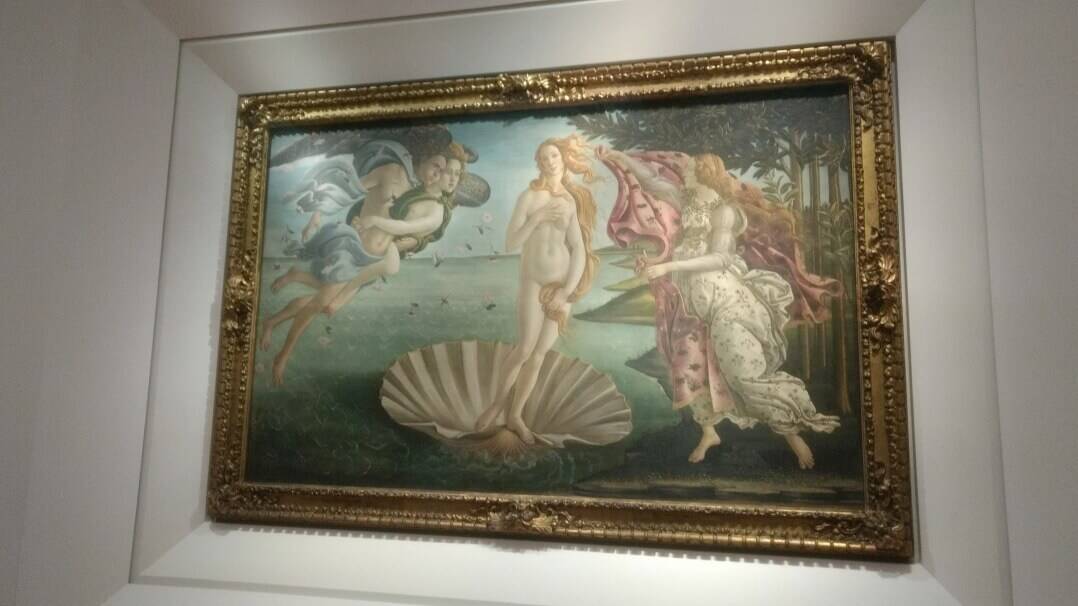
Get your tickets (or book a guided tour) for the Uffizi in advance. Lines are loooooong for those who travel to Florence unprepared.
I recommend going first thing in the morning to minimize crowds and then taking a cappuccino break on the terrace.
Other notable artworks at the Uffizi include Botticelli’s Primavera, Leonardo da Vinci’s unfinished Adoration of the Magi,
Michelangelo’s Tono Doni (his only surviving completed panel painting) and Titian’s Venus of Urbino.
Bucket list art in the United States
New York City
Museum of Modern Art
Les Demoiselles d’Avignon, Pablo Picasso (1907)
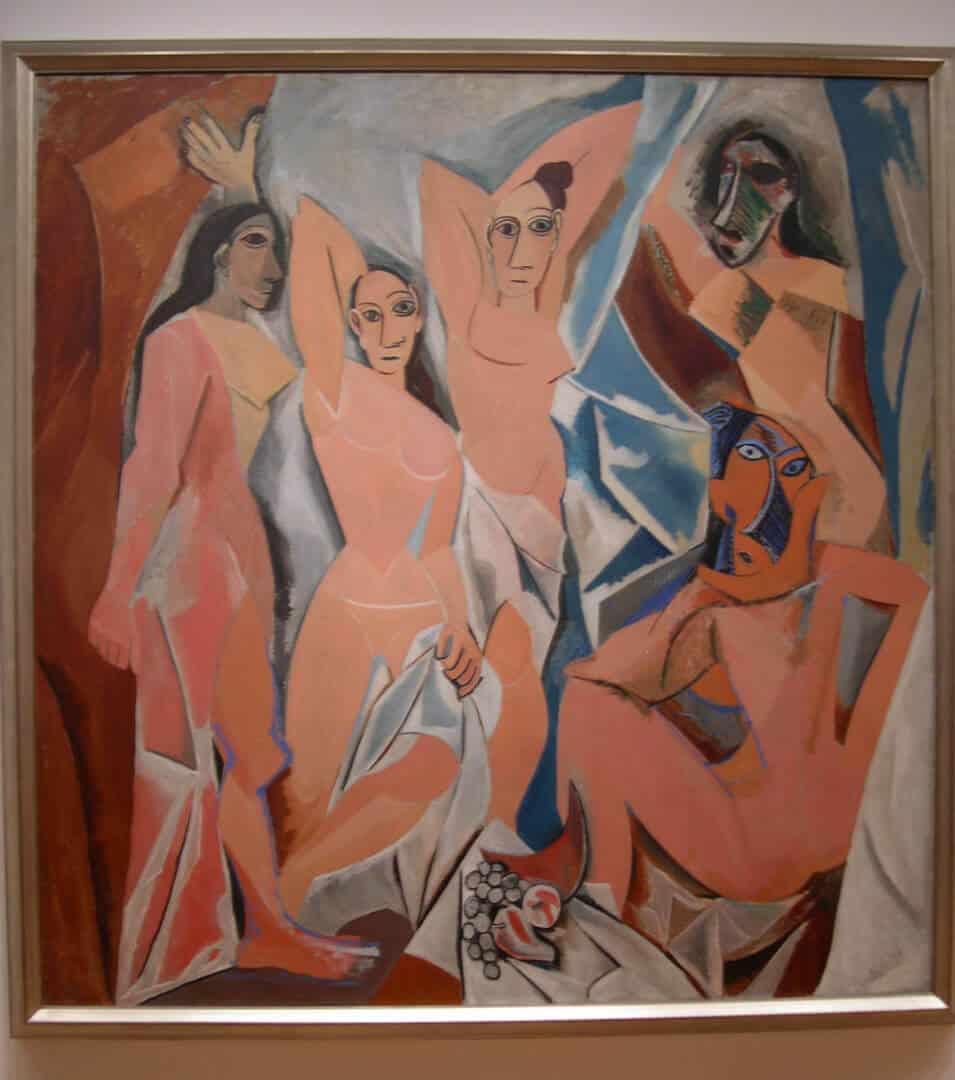
It’s not pretty. Not at all. But this is an incredibly important work of art, and I make a point to spend time with this painting every time I’m at MoMA.
Picasso’s painting of prostitutes at a brothel in Avignon sparked quite a few negative feelings, even anger, among other artists at the time, and the painting remained hidden away until about nine years after he finished it.
Demoiselles wasn’t exhibited publicly until 1916. It remained in a private collection until the 1930s, when MoMA purchased it for $24,000.
Newsweek published an article in 2007 (the 100th anniversary of Demoiselles’ completion) declaring it “the most important work of art of the last 100 years.”
The Starry Night, Vincent Van Gogh (1889)
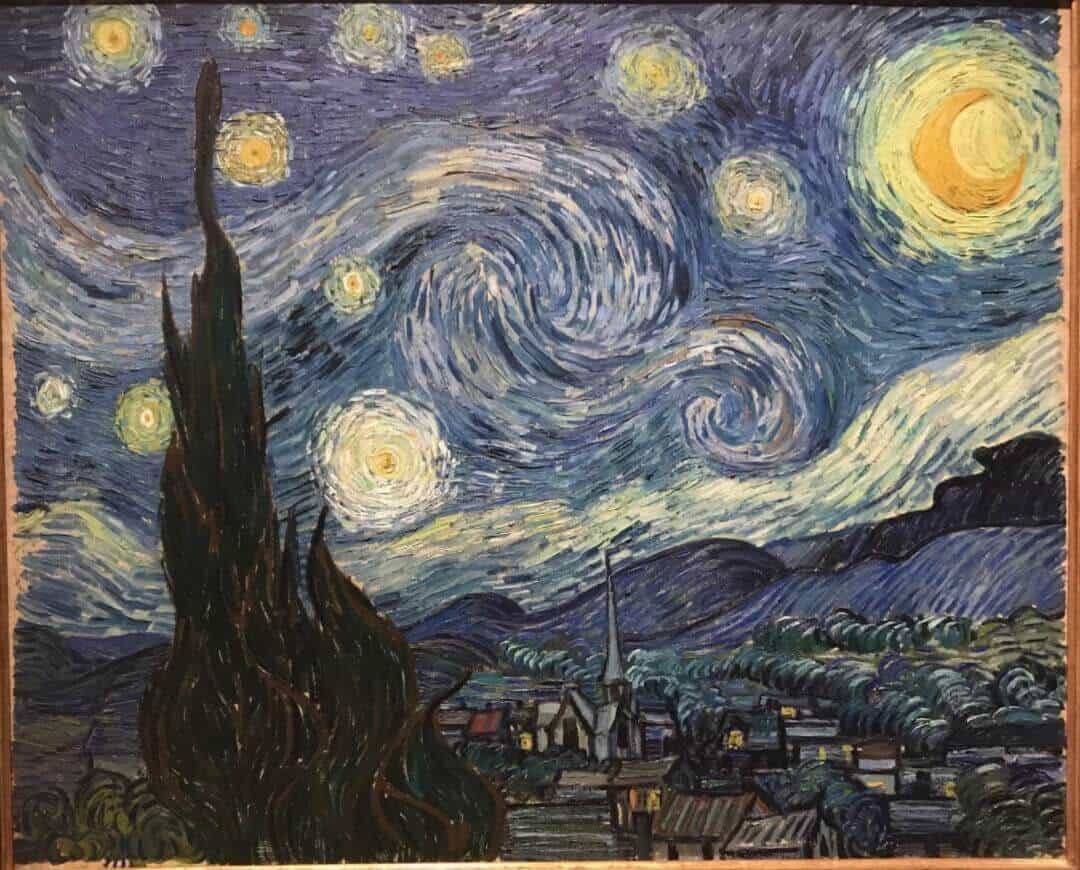
Once you’ve taken in the ugly, but revolutionary, Les Demoiselles d’Avignon, you can move on to the familiar and beautiful.
You know a painting is really important when you can find it on coasters, tote bags and umbrellas.
But of course, souvenirs can never capture Van Gogh’s texture anywhere near accurately. You simply have to see this painting in person.
The crowd around The Starry Night will be dense but don’t back down. It’s worth a wait and getting elbowed about a bit to spend a minute or two directly in front of this painting.
Pre-MoMA renovation The Starry Night was displayed in the center of a gallery that was not ideal for managing the crowds that would gather around the painting.
One: Number 31, 1950, Jackson Pollock (1950)
You don’t think I’d leave off “Jack the Dripper” from my art bucket list, do you?
Pollock’s enormous One: Number 31, 1950 is one of the most important abstract expressionist artworks created not just by Pollock, but by any artist.
This, like many of Pollock’s pieces, was created with the canvas lying on the floor and the artist working from above.
I know that Pollock, and other abstract expressionists, have their detractors, but if you’ve ever seen film of Pollock working, you’d see in an instant that he was a master of the media he used.
These paintings weren’t accidents. He understood how different paints and pigments flowed and the kinds of marks he could get with the various tools he used.
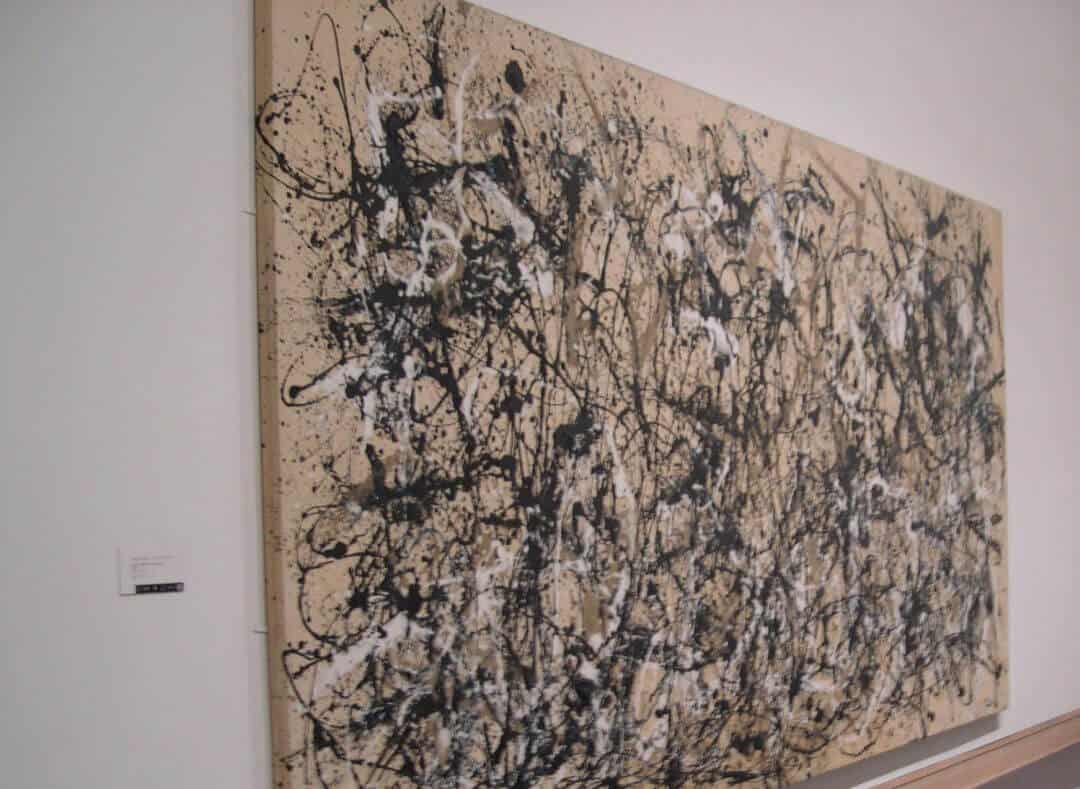
The Persistence of Memory, Salvador Dali (1931)
I often refer to this painting as The One with the Melting Clocks. I mean, that really is the best way to describe it, right?
While I wouldn’t call it a pleasant painting, it is rather mesmerizing, and this is certainly one of the most important pieces created by the most prominent surrealist.
I have to admit that the surrealists don’t really “speak to me,” but I admire their attempts to present a “super-reality” of their dream world and reality.
At least I think that’s what they tried to do. I don’t really know. Maybe that’s part of the point?
I digress.
Other important artworks at the Museum of Modern Art include Andrew Wyeth’s Christina’s World, Andy Warhol’s Campbell’s Soup Cans, another significant Water Lilies by Monet, and Paul Cezanne’s The Bather.
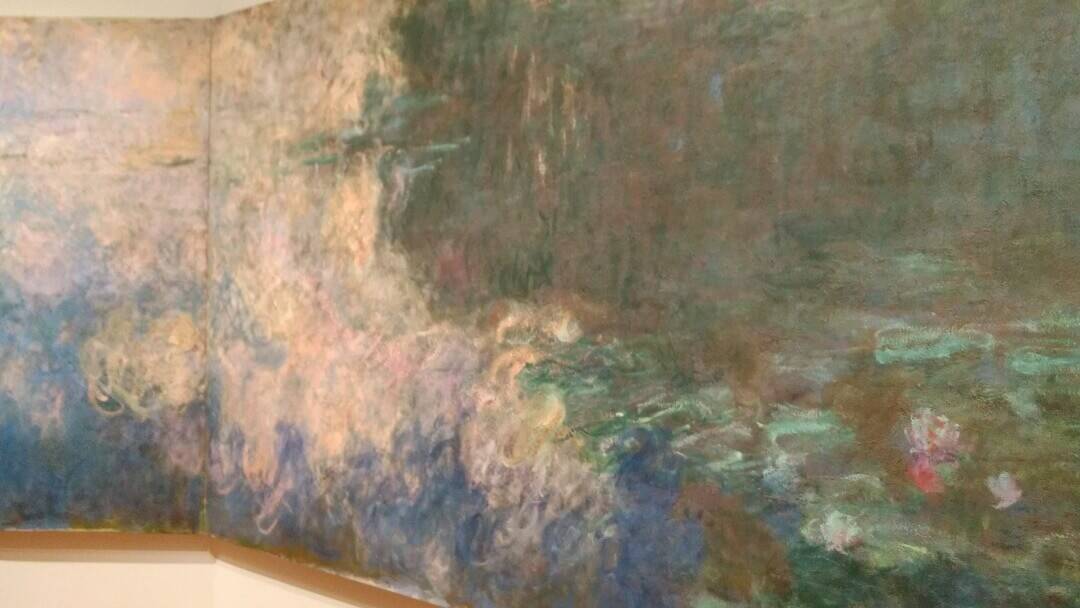
The Museum of Modern Art has one of the highest masterpiece densities of any museum I’ve ever toured.
High-density museums give you a lot of bang for your buck. Please note this is not an official statistic. I just made it up.
The Musée d’Orsay (see above) also has a very high masterpiece density.
The Metropolitan Museum of Art
The Rehearsal of the Ballet Onstage, Edgar Degas (1874)
If you like Degas, then a visit to the Metropolitan Museum of Art (The Met) in New York City will have to be on your art travel bucket list, and it’s definitely something you need to do on your first trip to New York.
The Met collection includes literally dozens of Degas paintings, pastels, sketches, and sculptures.
And is there anything more classically Degas than his Rehearsal of the Ballet on Stage? The Met owns two versions of this scene, one in pastels and one in oils.
There is a larger grisaille version of this at Musée d’Orsay. The Met also holds a variant of The Dance Class that’s also in the Musée d’Orsay collection.
The Met is simply one of the most important museums in the world…and the largest in the U.S. You owe it to yourself to visit.
Other notable artworks at The Met include Caravaggio’s The Denial of St. Peter, John Singer Sargent’s Portrait of Madame X, and Van Gogh’s Self Portrait with a Straw Hat. They also have an extensive antiquities wing and mount wonderful special exhibitions.
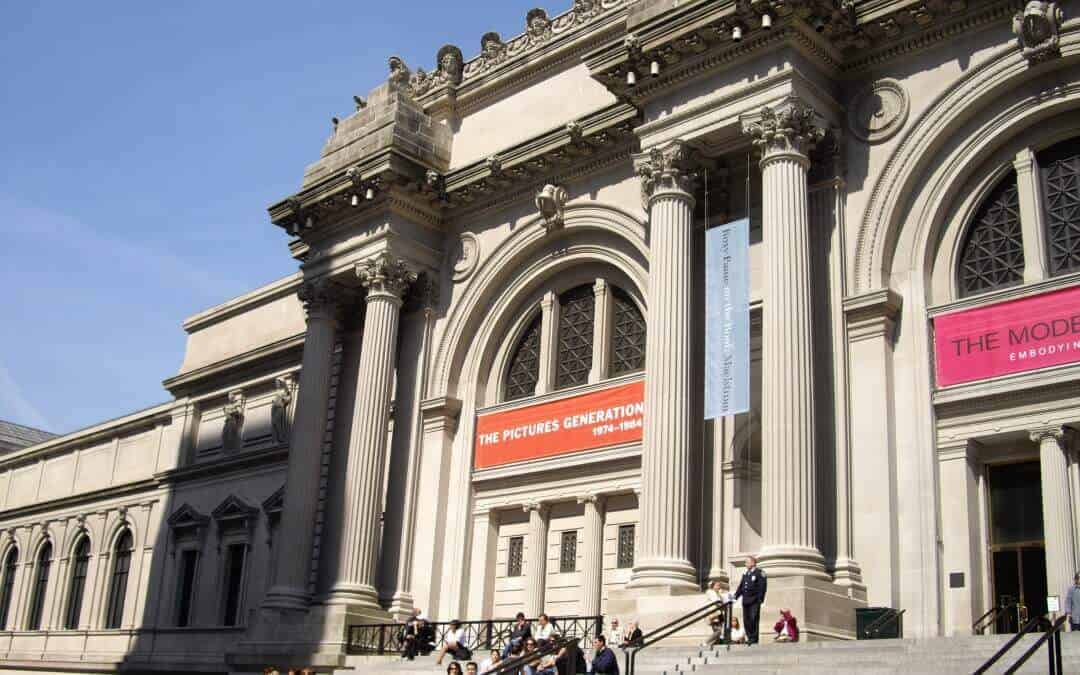
Bucket list art elsewhere in the United States
Art Institute of Chicago (Illinois)
Nighthawks, Edward Hopper (1942)
Two of my sister’s favorite paintings in the world are at the Art Institute of Chicago. One is Seurat’s A Sunday on Le Grande Jatte (see below) and the other is Edward Hopper’s Nighthawks.
“One of the best-known images of twentieth-century art, the painting depicts an all-night diner in which three customers, all lost in their own thoughts, have congregated.”
I find this painting a good reminder that feelings of isolation, even in the company of others, are not limited to the 21st century.
A Sunday on Le Grande Jatte, Georges Seurat (1886)
Seurat’s enormous painting is THE pointillist masterpiece and is no doubt the Art Institute’s top draw. My recommendation for this painting is to view it from three distances.
First, get as close as you can so that you can see how Seurat used the tiny dots of color to blend and create new colors.
Then step back a bit so that you can send the blend but still close enough that the painting is all that you can see.
Then, finally, step far back and get the full view from a distance.
Other important works in the Art Institute of Chicago collection include Grant Wood’s American Gothic, one of Van Gogh’s Bedroom paintings (the others are in Amsterdam and at Musée d’Orsay), Georgia O’Keefe’s Cow Skull with Calico Roses, and Andy Warhol’s Mao.
National Gallery of Art, Washington, DC
Symphony in White, No. 1: The White Girl, Whistler (1862)
Though James McNeil Whistler is best known for his Arrangement in Grey and Black No. 1 (most commonly called Whistler’s Mother), I find Symphony in White a much more beautiful and nuanced work.
Whistler was only 27 when he painted this, and it was rejected from the first Paris salon in which he hoped to show it publicly.
Though on the surface this painting may appear a standard portrait, for mid-18th century Europe, depicting a woman with loose hair, in an “everyday dress,” and a somewhat blank expression was a major departure from what was considered acceptable at the time.
In other words, this painting was somewhat radical.
Whistler himself considered the color white to be the subject of the painting, while critics and viewers focused on the girl.
Other significant works at the National Gallery of Art include Leonardo’s Ginevra de’Benci, a Rembrandt self-portrait, Monet’s The Japanese Footbridge, Jackson Pollock’s Number 1, 1950 (Lavender Mist), and Edouard Manet’s The Railway.
Admission to the National Gallery of Art is free for all guests.
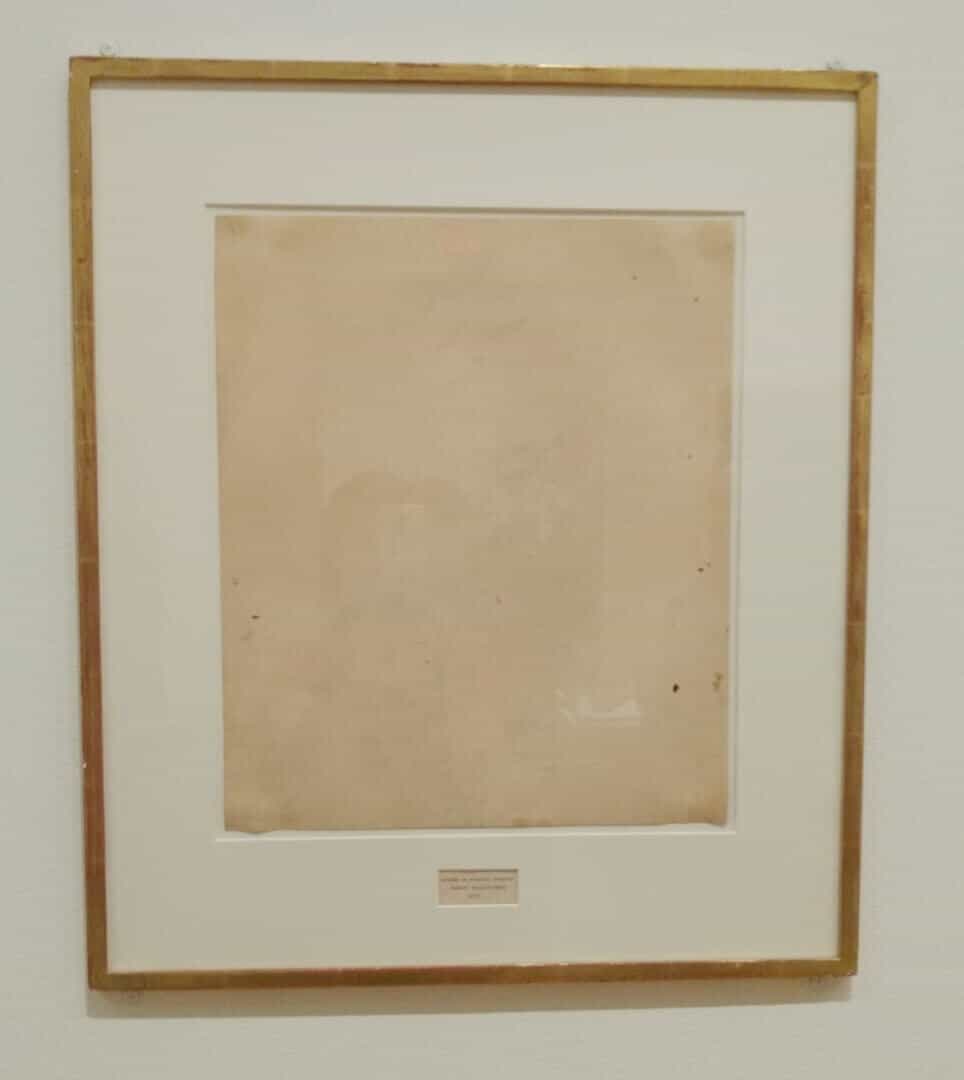
San Francisco Museum of Modern Art (California)
Erased de Kooning Drawing, Robert Rauschenberg (1953)
Call me weird but this is actually one of my favorite artworks. American artist Robert Rauschenberg literally took a drawing that Willem de Kooning did in pencil, crayon, etc., and erased it.
And at the time de Kooning was considered the premier abstract expressionist. I think the best way to appreciate this piece is to hear from Rauschenberg himself.
Art bucket list: the bottom line
The world is full of amazing works of art that you really need to consider seeing for yourself in person. Some are worth making a special effort to seek out.
Pin this post!



Enjoyed reading this. Always wanted to visit Europe, probably never will, sadly. Thank God reproductions are so good nowadays though I know they aren’t the same thing, especially for sculpture and of course, architecture. I would add Greece for the sculpture and Spain the Prado..
Thank you for your kind words. I’m glad you enjoyed reading this. I truly hope you’ll be able to get to Europe one day.
Taking a moment to really look at pieces of art is very much like taking a moment to really see the world around us. Thank you for this moment in time.
What a lovely thought! Thanks for reading.
Great, mark down!
I’m thinking about my bucketlist of Rome museums, especially the low rated and hidden ones!
Great guide. Never considered travelling to Louvre. This guide gives me the confidence to travel there.
I saw so many of the classics as a child that as an adult, I’m definitely more drawn to contemporary art! I’d love to see a list of contemporary bucket list pieces (I nominate Novecento by Maurizio Cattelan… a spectacular work that is made all the more spectacular by its surroundings!).
Those are some great ides there, I always wanted to visit Louvre, which should possibly be on every bucket list!
I agree! Thanks for reading!
Great post!! So much information all in one place. I have pinned this post for my later reference!
Thanks so much!
Great suggestions. We just toured The Vatican museum and we were amazed at the art work!
Thank you! Yes, the Vatican is amazing.